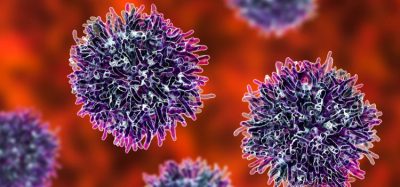Kickstarting the use of AI for biotechs: part one
Posted: 15 May 2024 | Dr Raminderpal Singh (Hitchhikers AI and 20/15 Visioneers) | No comments yet
Traditional wet lab scientists working on target discovery, drug identification and drug optimisation have an opportunity to catch-up with their AI-enabled peers – but why should they, and how? In this article – the first of a three-part series – Dr Raminderpal Singh seeks to demystify the topic by outlining the big picture, before touching on specific methods and finally discussing the risks and transformation required in the following two articles.


To calibrate our expectations over the use of AI, the following gives a sobering perspective1.
According to Patrick Malone, a principal at KdT Ventures in the US, clinical wins are rarities in biotech, where an estimated five or 10 percent of drugs that head into human testing actually get approved.1
“If you take the hype and PR at face value over the last 10 years, you would think it goes from five percent to 90 percent,” Malone said of AI. “But if you know how these models work, it goes from five percent to maybe six or seven percent.”
Biomarkers aren’t just supporting drug discovery – they’re driving it
FREE market report
From smarter trials to faster insights, this report unpacks the science, strategy and real-world impact behind the next generation of precision therapies.
What you’ll unlock:
- How biomarkers are guiding dose selection and early efficacy decisions in complex trials
- Why multi-omics, liquid biopsy and digital tools are redefining the discovery process
- What makes lab data regulatory-ready and why alignment matters from day one
Explore how biomarkers are shaping early drug development
Access the full report – it’s free!
Of course, with the billions of dollars being invested in AI-led drug discovery programmes, one would think that this is a pivotal moment in patient treatment – like Isomorphic Labs, Recursion, Exscientia, Flagship Pioneering, the big biopharmaceuticals, and even a “$1B+ bet”2 on Xaira Therapeutics, who have invested heavily in the promise of AI.
Taking a close look at the different applications for AI (and data), there is an emerging pattern for where AI is being applied and why it cannot be avoided. Consider the following examples:
- Generating and analysing existing data
- Designing compound structures
- Designing in vitro experiments
- Understanding and modelling biological mechanisms
- Extracting deep insights from across literature and study reports
- Designing proteins.
The capability to perform the above activities quickly and cost-efficiently would be nice, which is of course an understatement, given the stresses that early stage (pre-clinical) biotechs are under these days with equity funding.3 To add, funding for pre-clinical platform biotechs has tightened as investors increasingly prefer companies with clinical-stage assets (according to Q1 2024 funding reports).3
The value required is more than just a greater number of FDA approvals, it is also about completing milestones with limited capital – ie, biotech survival.
Like most industries, you have those who are early adopters and those who are waiting for the technology to “cross the chasm”4 and to become mainstream. The latter group (ie, most of us) are waiting for wet lab validation, market demonstration (FDA approvals), and a few other things (which we often cannot define). However, this tactic runs its own risk: if we wait, we may be too late to the game – just like traditional automobile manufacturers have been when trying to catch up with Tesla.5
There is no reason why the early-stage biotechs cannot also implement simple, but still effective, AI. The next article in this series, going live Friday 24th May, will give you some pointers.
References
1 Dunn A. Endpoints News. After years of hype, the first AI-designed drugs fall short in the clinic. [Internet] 2023 [updated 2023 October 19; cited 2024 April]. Available from: https://endpts.com/first-ai-designed-drugs-fall-short-in-the-clinic-following-years-of-hype/
2 Cross R, Dunn A. Endpoints News. Exclusive: In $1B+ bet on AI, biopharma heavyweights back new startup to upend drug R&D. [Internet] 2024 [updated 2024 April 23; cited 2024 April]. Available from: https://endpts.com/in-biggest-ever-bet-on-using-ai-to-design-drugs-biotech-heavyweights-launch-xaira-with-1b-in-backing/
3 Buntz B. Drug Discovery & Development. 20 biotech startups attracted almost $3B in Q1 2024. [Internet] [2024 April 5, cited 2024 April]. Available from: https://www.drugdiscoverytrends.com/20-biotech-startups-attracted-almost-3b-in-q1-2024-funding/
4 Moore GA, McKenna R. 1999. Crossing the Chasm: Marketing and Selling high-tech Products to Mainstream Customers. Harper Collins.
5 Randall T. Where is Tesla’s EV competition? The Economic Times [Internet]. [updated 2023 October 5, cited 2024 April]. Available from: https://economictimes.indiatimes.com/industry/renewables/where-is-teslas-ev-competition/articleshow/104193382.cms?from=mdr
About the author


Dr Raminderpal Singh is a recognised key opinion leader in the techbio industry. He has over 30 years of global experience leading and advising teams on building computational modelling systems that are both cost-efficient and have significant IP value. His passion is to help early to mid-stage life sciences companies achieve novel biological breakthroughs through the effective use of computational modelling.
Raminderpal is currently leading the HitchhikersAI.org open-source community, accelerating the adoption of AI technologies in early drug discovery. He is also CEO and co-Founder of Incubate Bio – a techbio providing a service to life sciences companies who are looking to accelerate their research and lower their wet lab costs through in silico modelling.
Raminderpal has extensive experience building businesses in both Europe and the US. As a business executive at IBM Research in New York, Dr Singh led the go-to-market for IBM Watson Genomics Analytics. He was also Vice President and Head of the Microbiome Division at Eagle Genomics Ltd, in Cambridge. Raminderpal earned his PhD in semiconductor modelling in 1997. He has published several papers and two books and has twelve issued patents. In 2003, he was selected by EE Times as one of the top 13 most influential people in the semiconductor industry.
For more: http://raminderpalsingh.com ; http://hitchhikersAI.org ; http://incubate.bio
Related topics
Artificial Intelligence, Drug Discovery
Related organisations
HitchhikersAI








